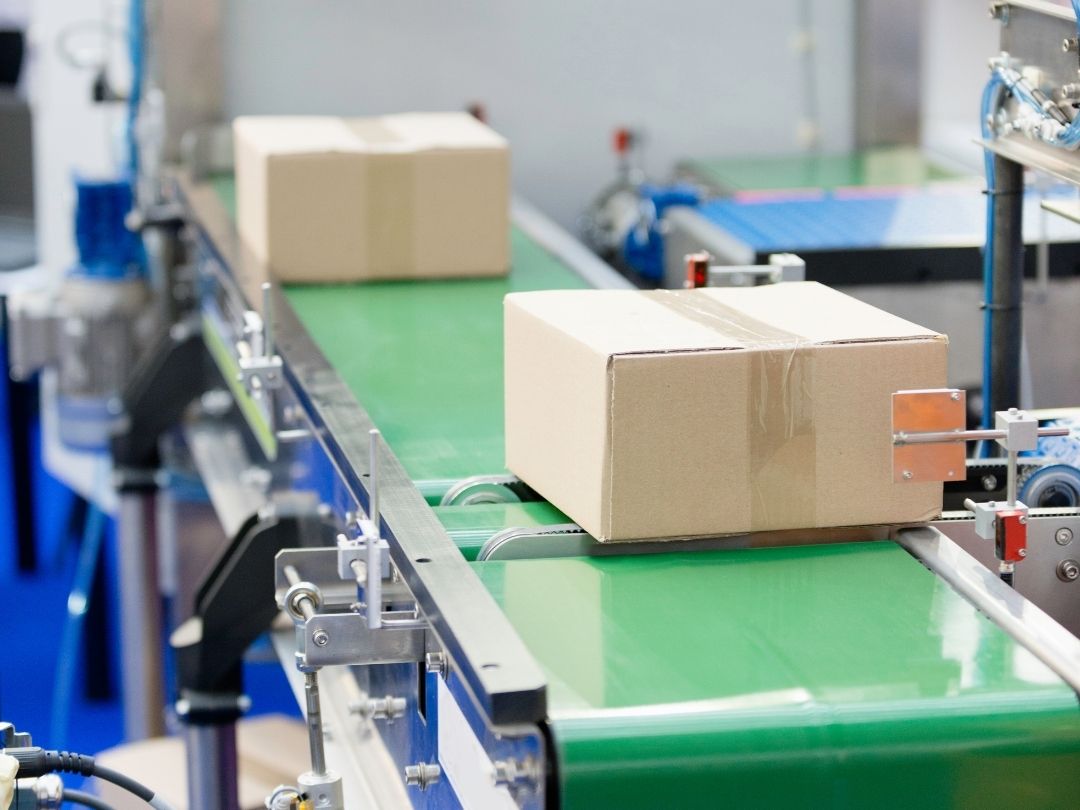Packaging – what does it mean? We explain!

The concept of packaging appears in many contexts related to logistics, storage and trade. Although it may sound technical, it refers to very specific and practical activities performed just before products reach store shelves or end users. It includes a series of operations that are intended to ensure not only protection, but also compliance with market requirements and convenience of further distribution. What is packaging? Let's find out below!
Packaging - definition
This term means a set of technical activities related to preparing products for further sale. This may include, among other things, labelling to identify the contents of the package, repacking goods from bulk packages to individual packages, adding promotional materials and applying appropriate markings.
In many cases, the product preparation process is based on the use of packaging machines - among others cartoners, tray and carton formers, and also vertical packaging machines Whether dosing systems. Their use not only increases efficiency, but also enables the execution of large orders in a repeatable and precise manner.
Scope of packaging – what activities does it include?
The packaging process can take different forms depending on the type of product, the purpose of distribution and the customer's requirements. Commonly used activities include:
- repacking products into individual packages;
- adding discount coupons, samples, promotional materials;
- information and marketing labeling;
- inventory management using barcodes;
- marking of packaging in accordance with market requirements;
- packing orders for shipping using foil, fillers and durable cardboard boxes;
- placing products on pallets in a way that allows them to be transported quickly.
The packaging of goods also includes quality control, which is necessary before further distribution. This is the stage where it is possible to detect any errors in markings or damage to packaging that could affect customer satisfaction.
Packaging of goods in e-commerce and traditional trade
Packaging of goods is used in many sectors. In smaller online stores, it is responsible for the correct packaging of products and their aesthetic preparation for shipping. In large retail chains – it streamlines the supply chain and at the same time supports building customer loyalty through professional presentation of articles. In both cases, product packaging enables us to maintain a high standard of service without using additional resources.
The use of automatic packaging lines, including machines that enable case packing, allows for faster securing of products in large volumes. These types of devices are especially useful for packing many items into larger boxes, which is often used in wholesalers and distribution centers. This allows goods to be organised in a way that facilitates transport and further distribution to subsequent stages of the supply chain.
Product packaging and market requirements
Preparing the product in line with market expectations requires not only taking care of its physical features, but also of its external information features. Therefore Packaging of goods includes labeling with nutritional tables, operating instructions, and markings in multiple languages.
Repackaging of products may also apply to stationery, electronic equipment or household items. Depending on the target group, it may also be important to add advertising materials that serve an informative function and support a positive brand image.
Packaging, logistics - the process of preparing and securing shipments
Correctly carried out packaging not only modifies the product packaging, but also effectively protects the goods during transport. Machine packaging ensures repeatability and high precision, but even the most modern technologies will not replace the proper selection of protective materials.
Securing products from damage requires the use of stretch film, fillers and packing tapes. Regardless of whether it is smaller shipments or large packages, securing goods directly affects their intact condition upon delivery. Packing products in boxes made of appropriate cardboard and using warning markers helps to avoid losses and complaints.
Packaging in practice
Daily order fulfillment in e-commerce means not only accelerating logistics processes, but also the need to meet high market standards. For this purpose, a packaging process is used that is in line with the customer’s requirements – both visually and practically.
Aesthetic packaging, well-chosen box, no empty spaces and included advertising supplements - all this contributes to the positive shopping experience of the recipient. Regardless of the industry, product packaging can significantly impact the way a brand is perceived by the end customer.
Machines in the packaging process – technology in the service of logistics
Modern manufacturing companies and logistics operators increasingly use advanced machinery to streamline the process of preparing products for distribution. Automatic packaging lines, cartoning machines and dosing systems allow not only for precise placing of products in appropriate packages, but also for their sorting and separation according to established parameters.
Additionally, tray and carton formers facilitate the creation of tailored collective packaging, which is of great importance in the context of optimizing space during transport. Properly configured machines eliminate human errors and help maintain a high level of quality control in every batch of goods.
FAQs:
1. Packaging of goods – what does it mean?
It is a set of activities that involve preparing products for sale or shipment, including packaging, labeling, placing them in bulk containers, and adding samples. The goal is both to protect the product and to meet distribution and logistics requirements.
2. Packaging – what is it and when does it become necessary?
We already know that packaging is the process of preparing goods for sale or shipment, often using machines. It becomes necessary, for example, when a product needs to be adapted for retail sales or a promotional campaign.
Spis treści


